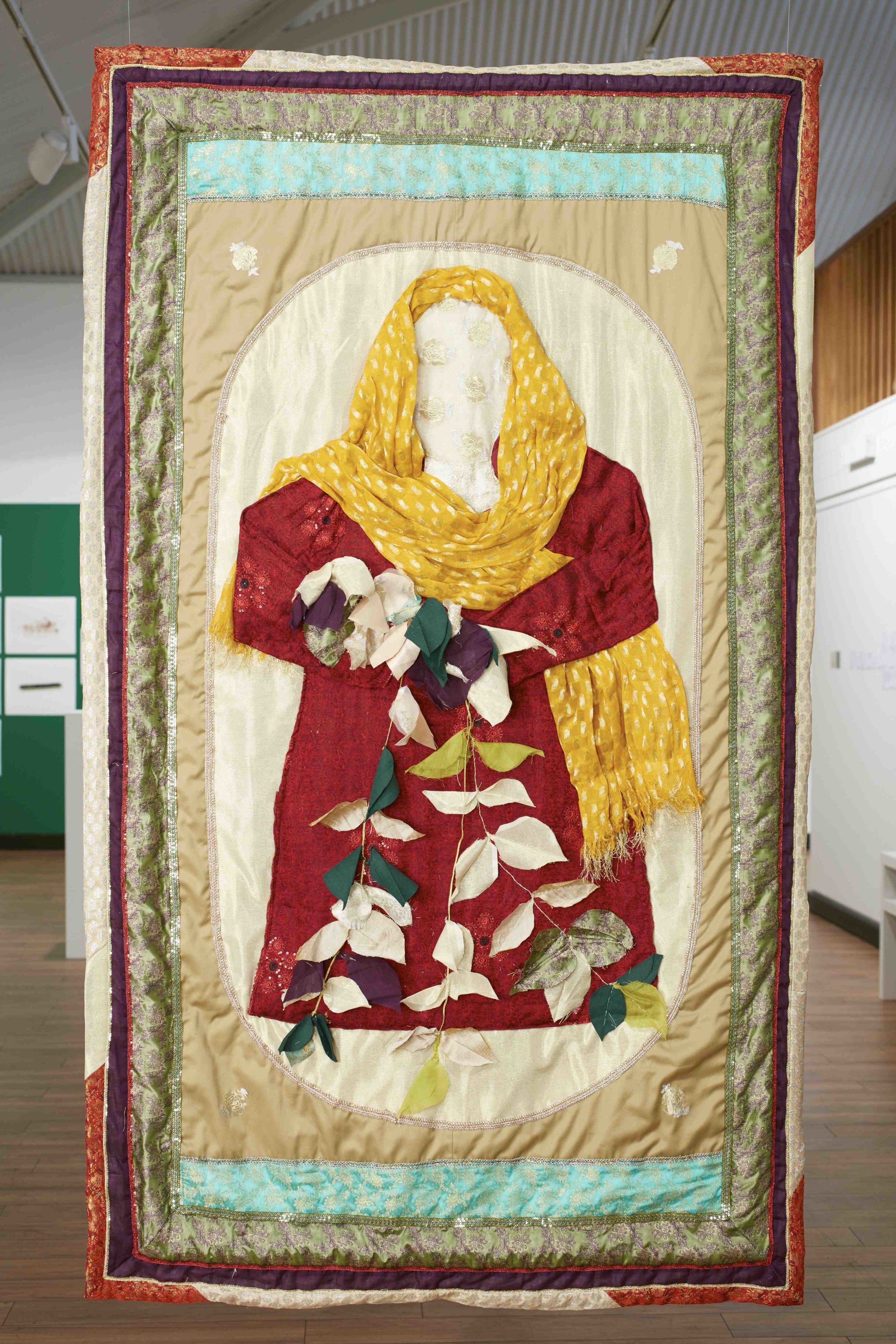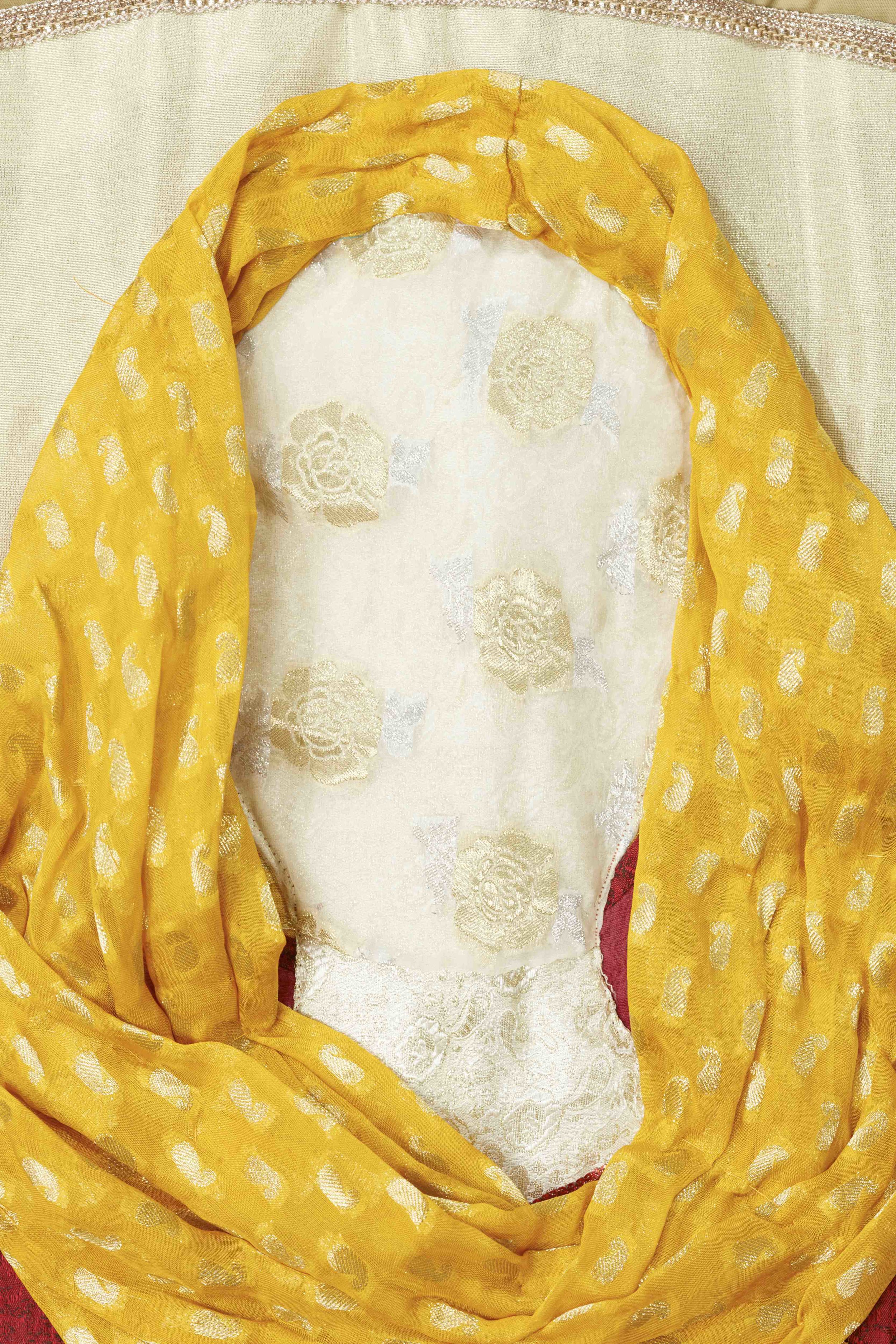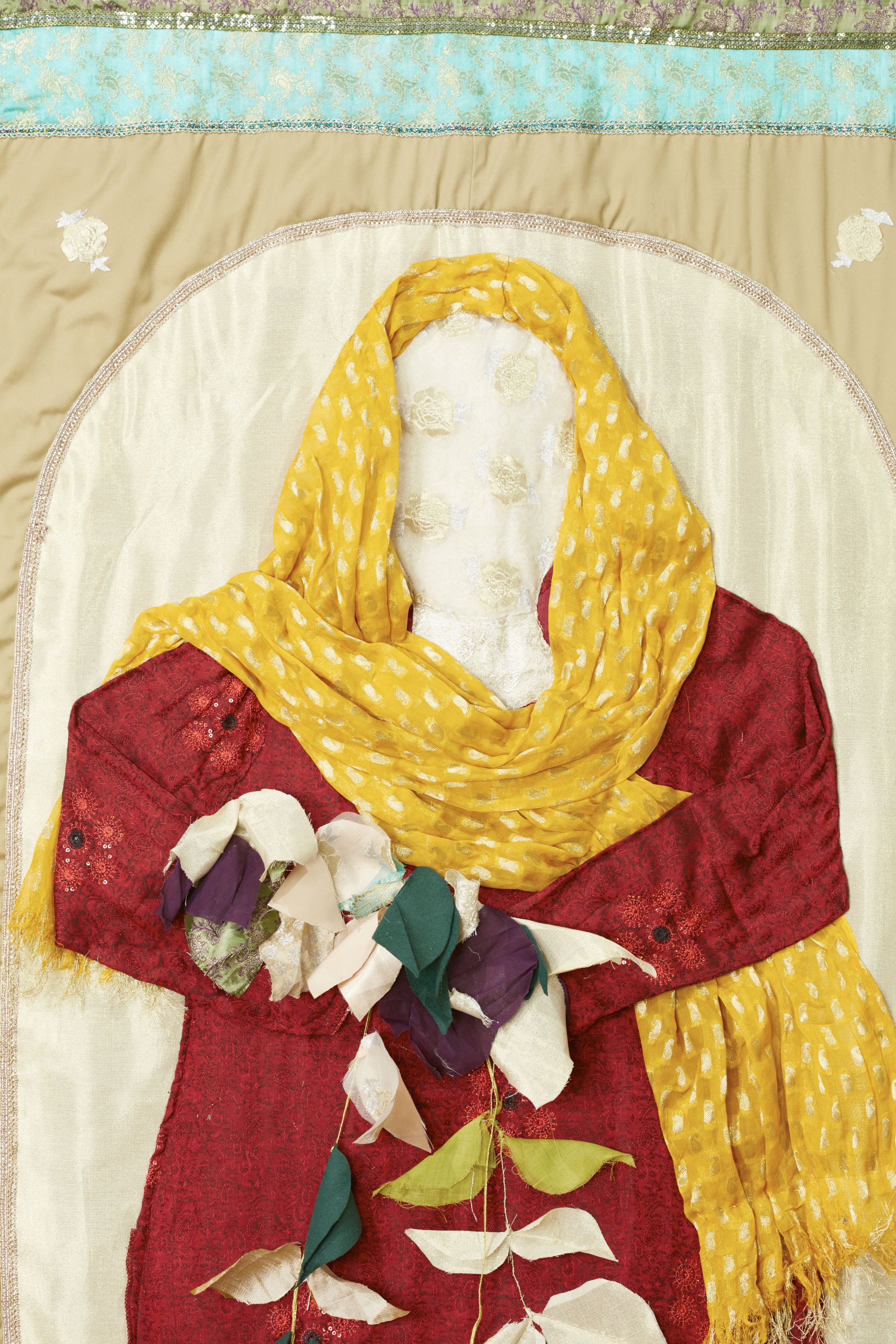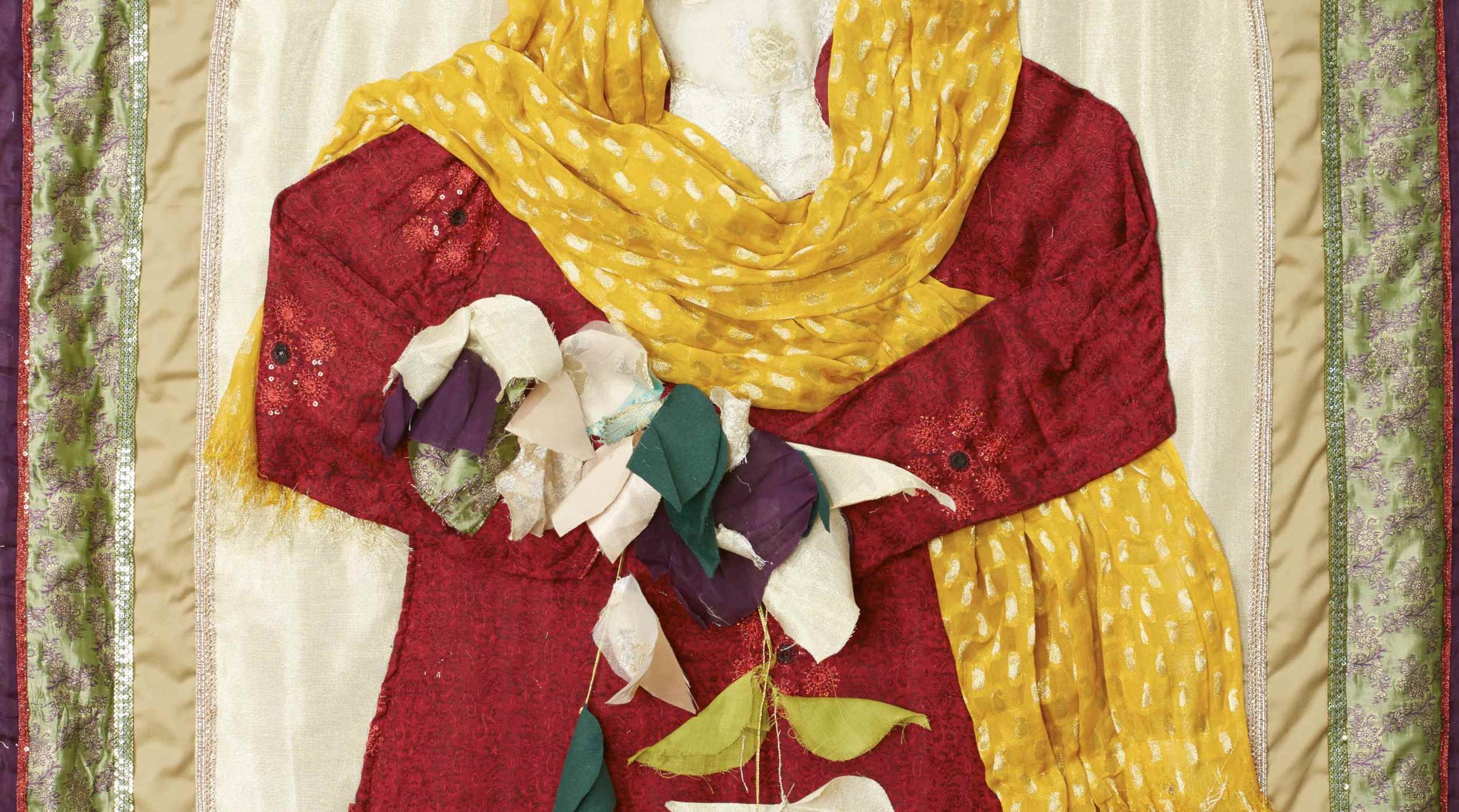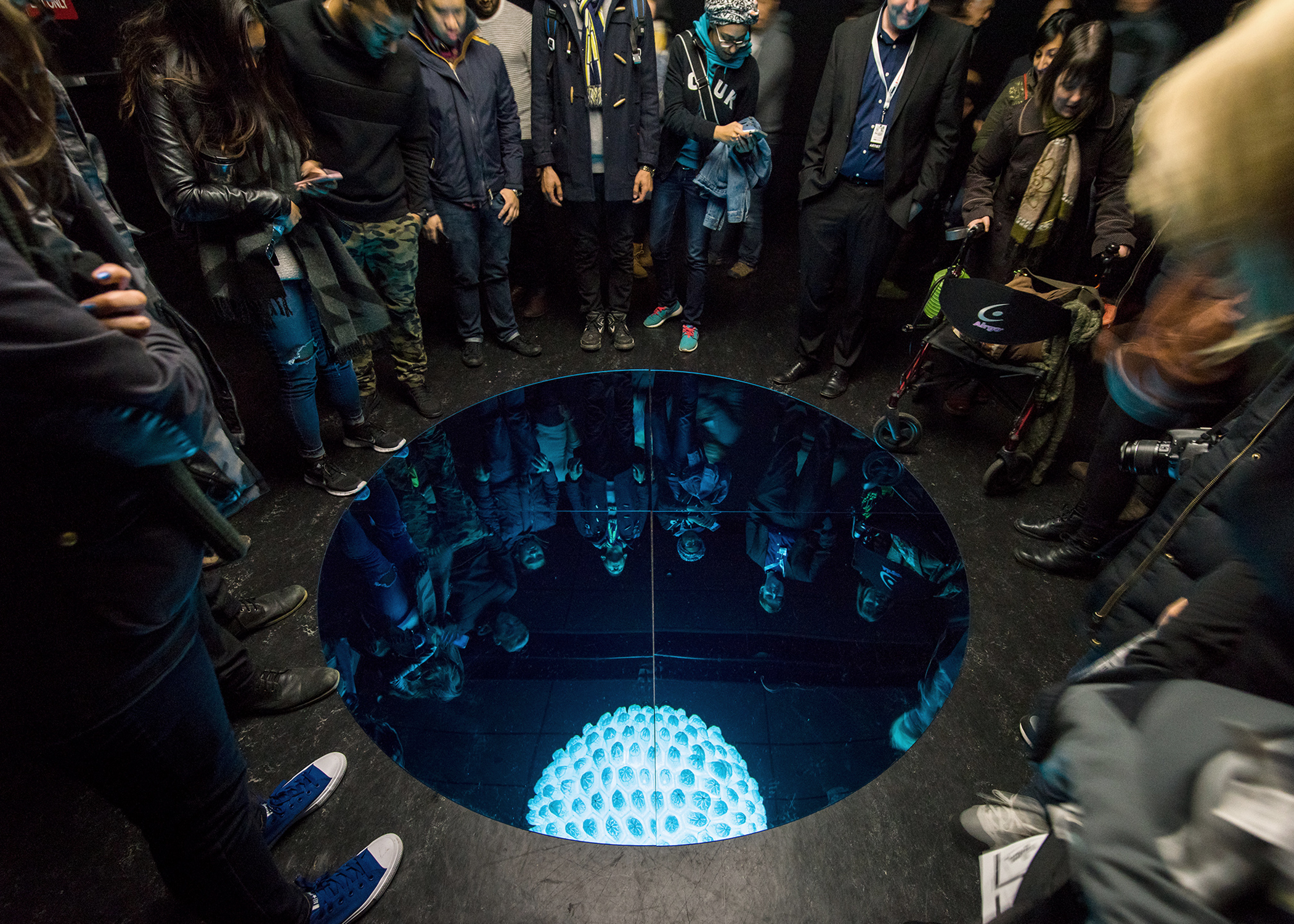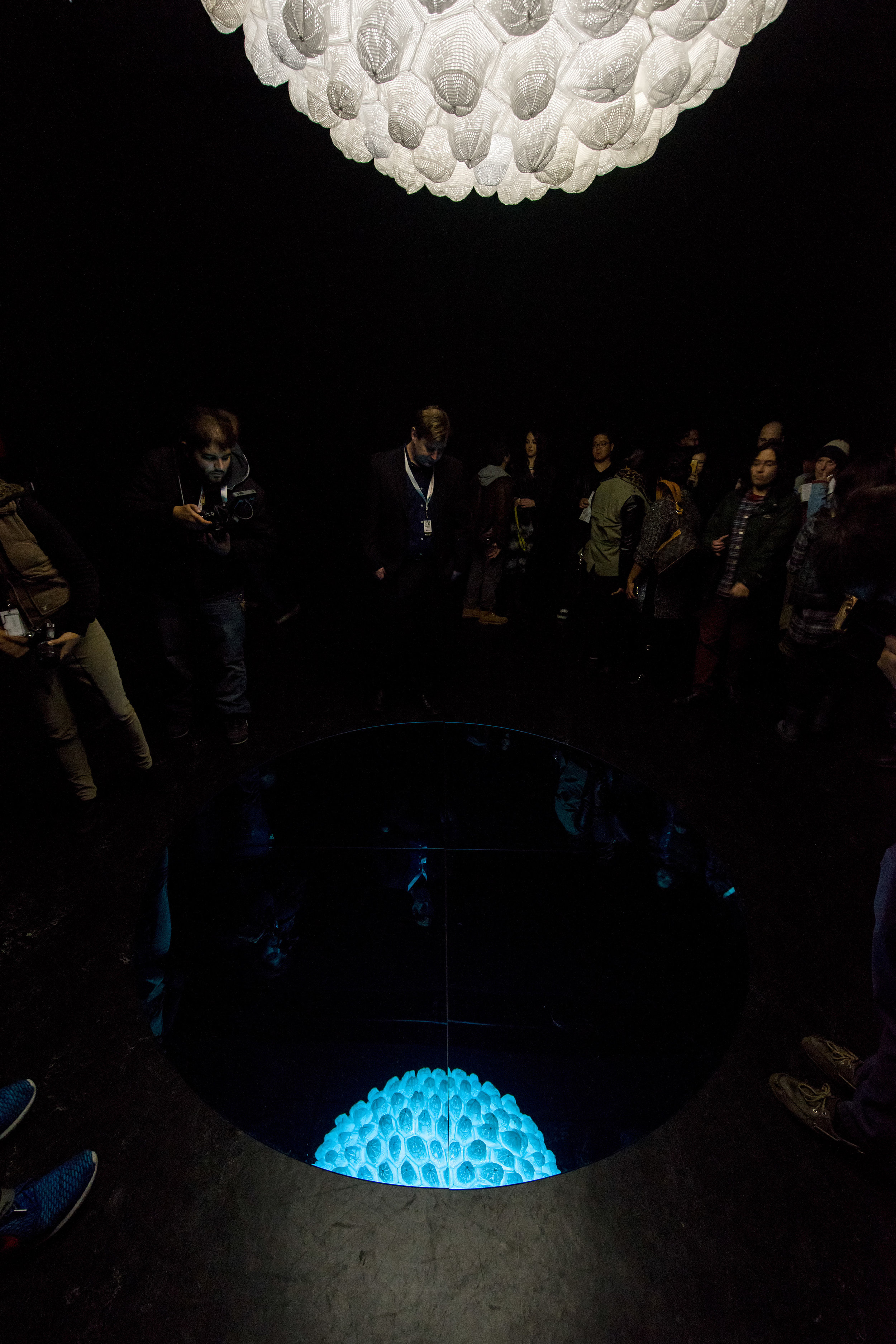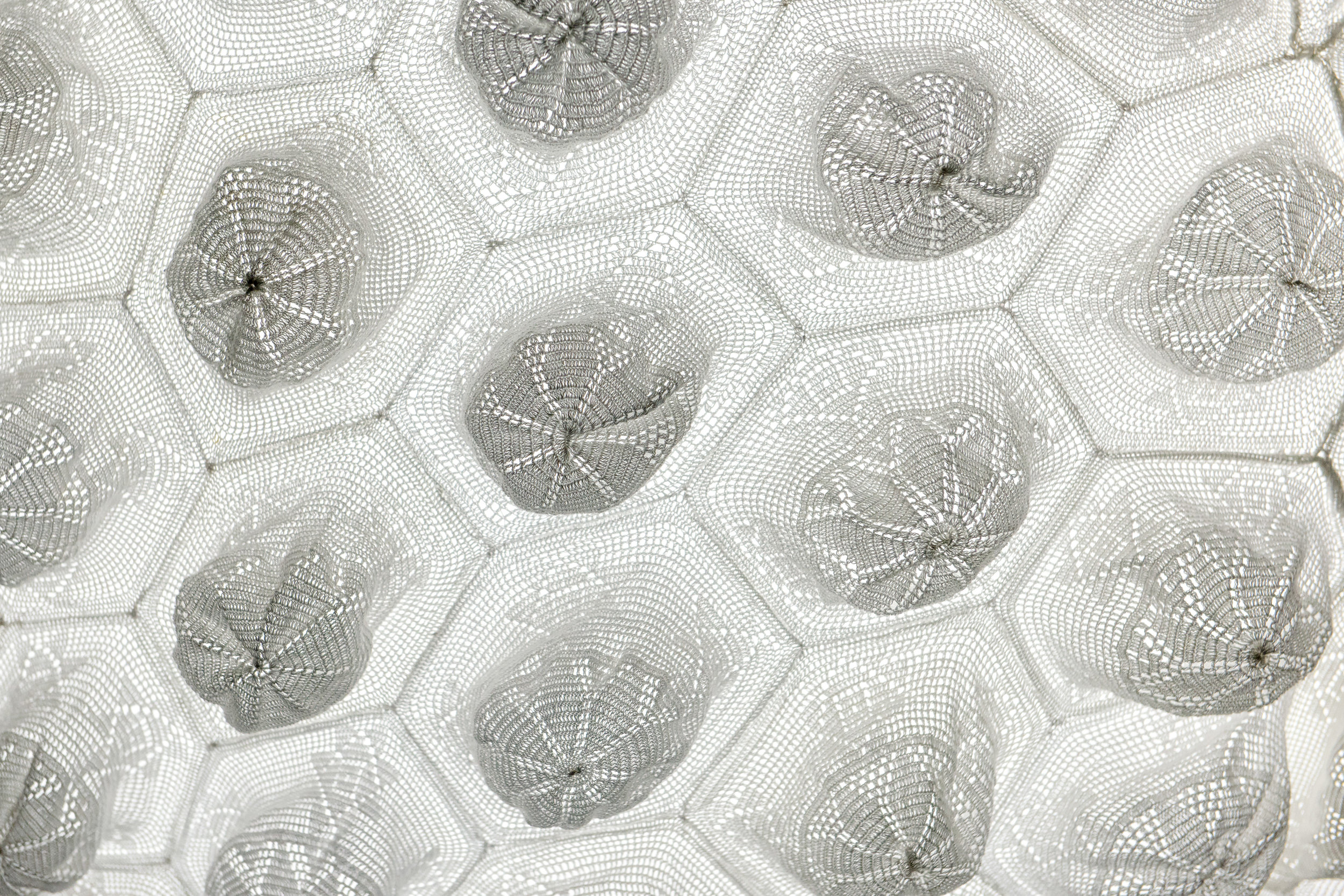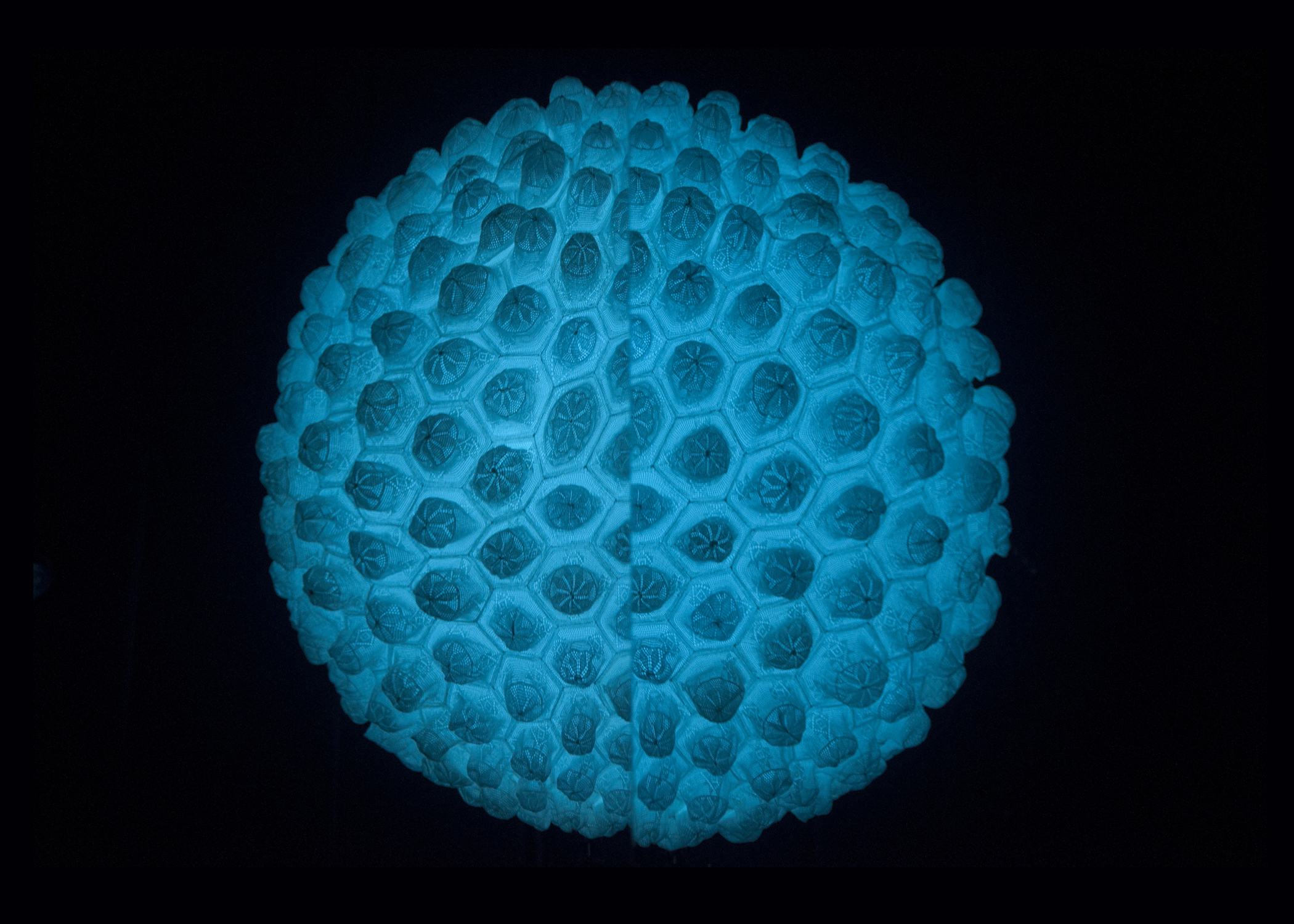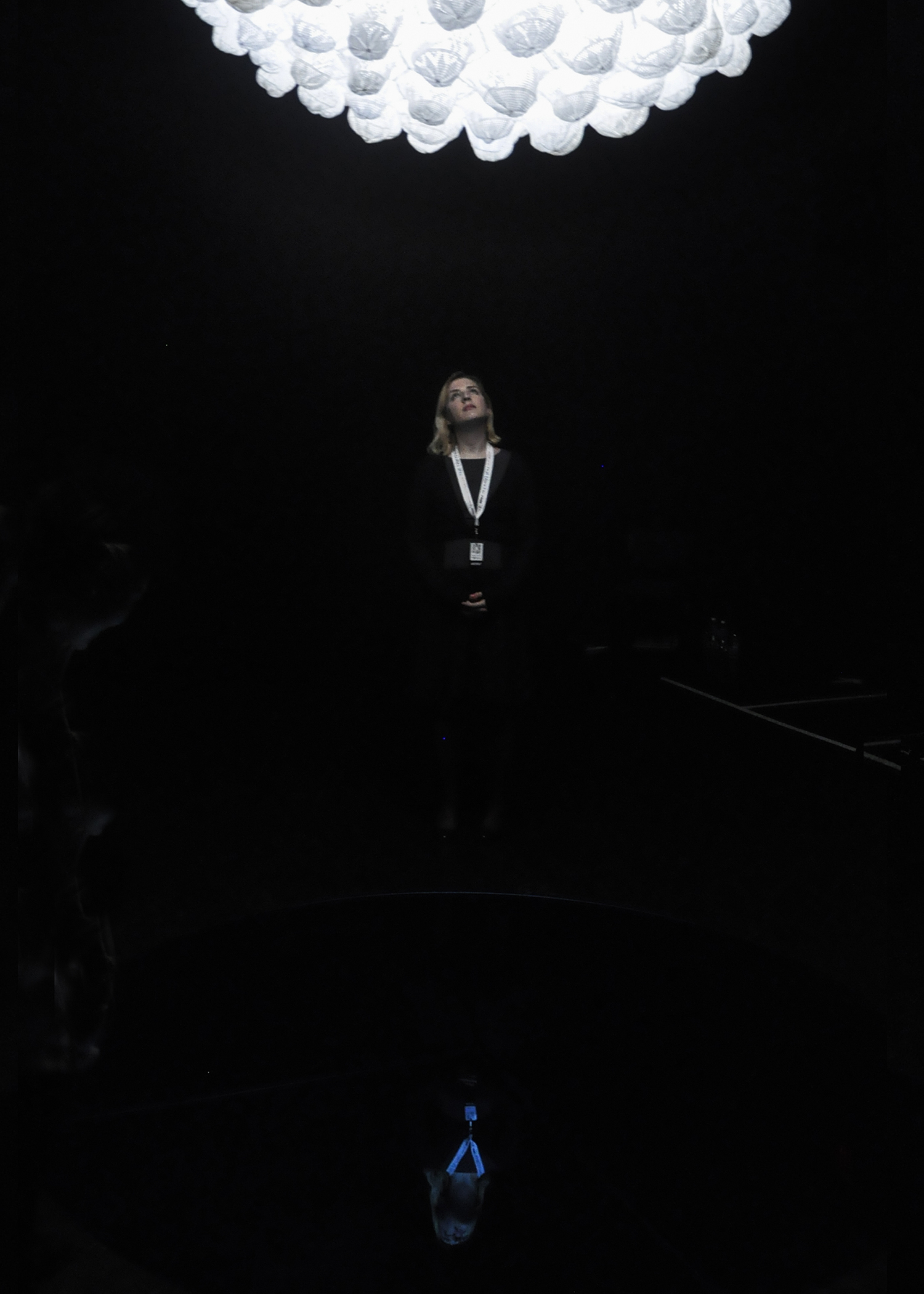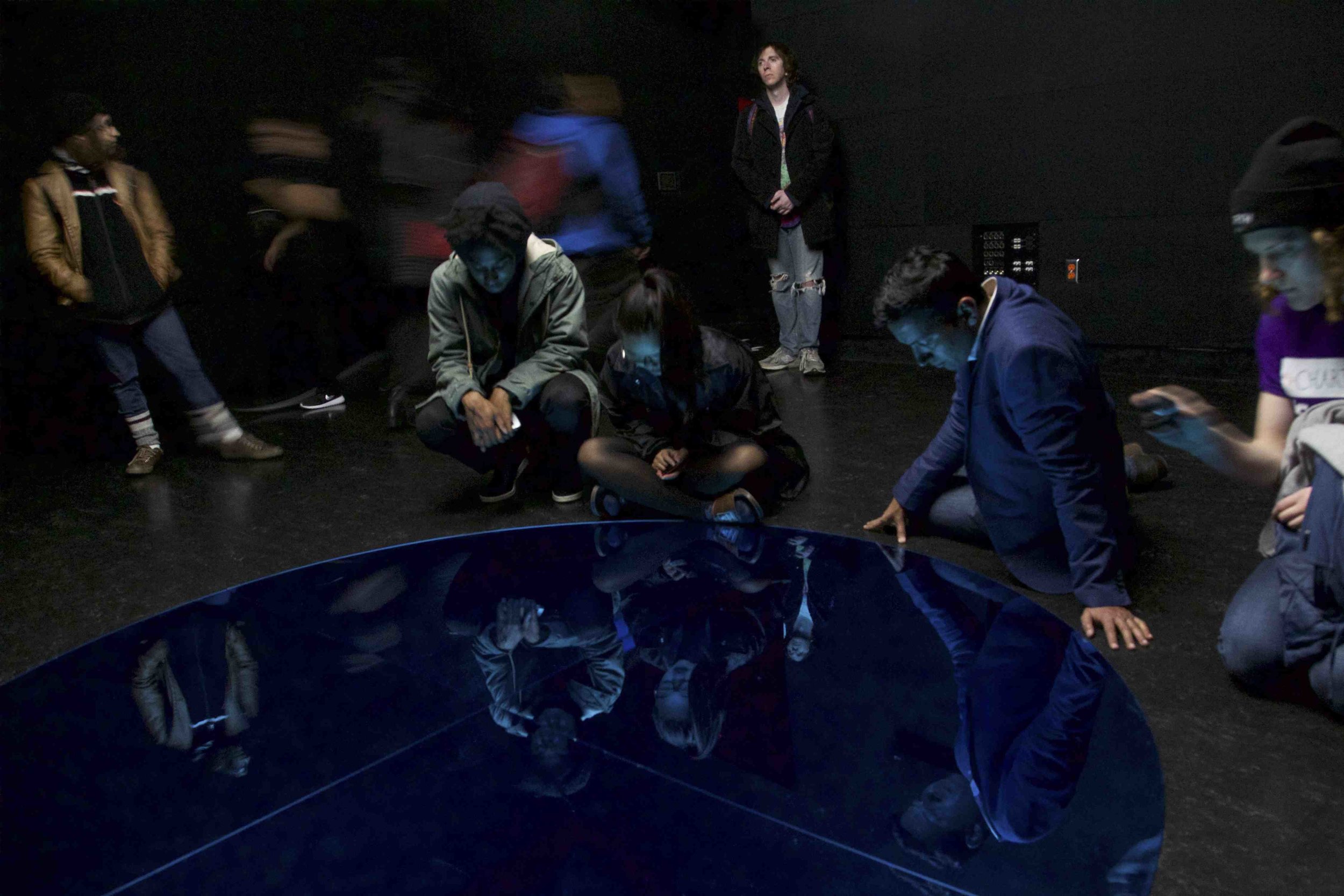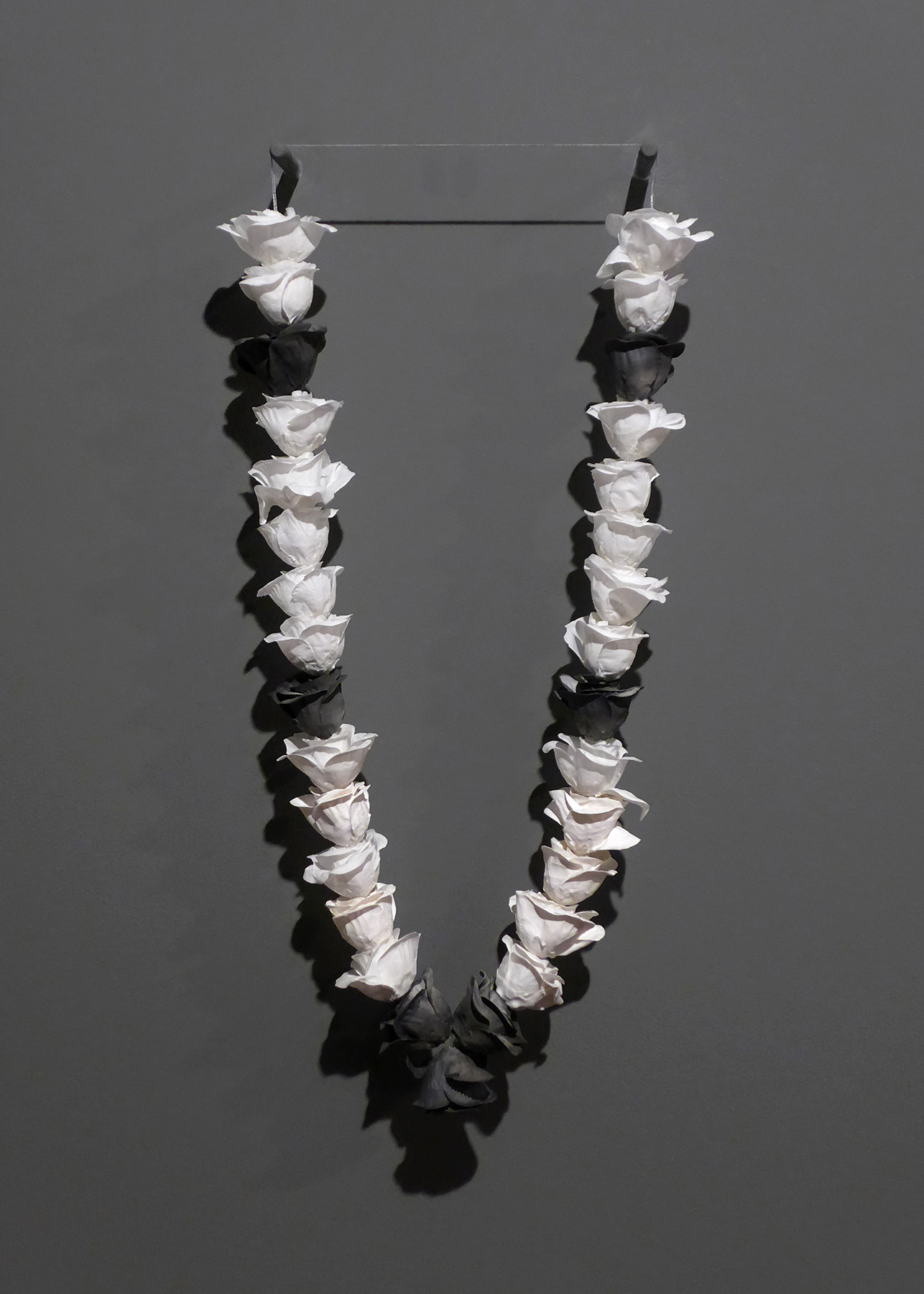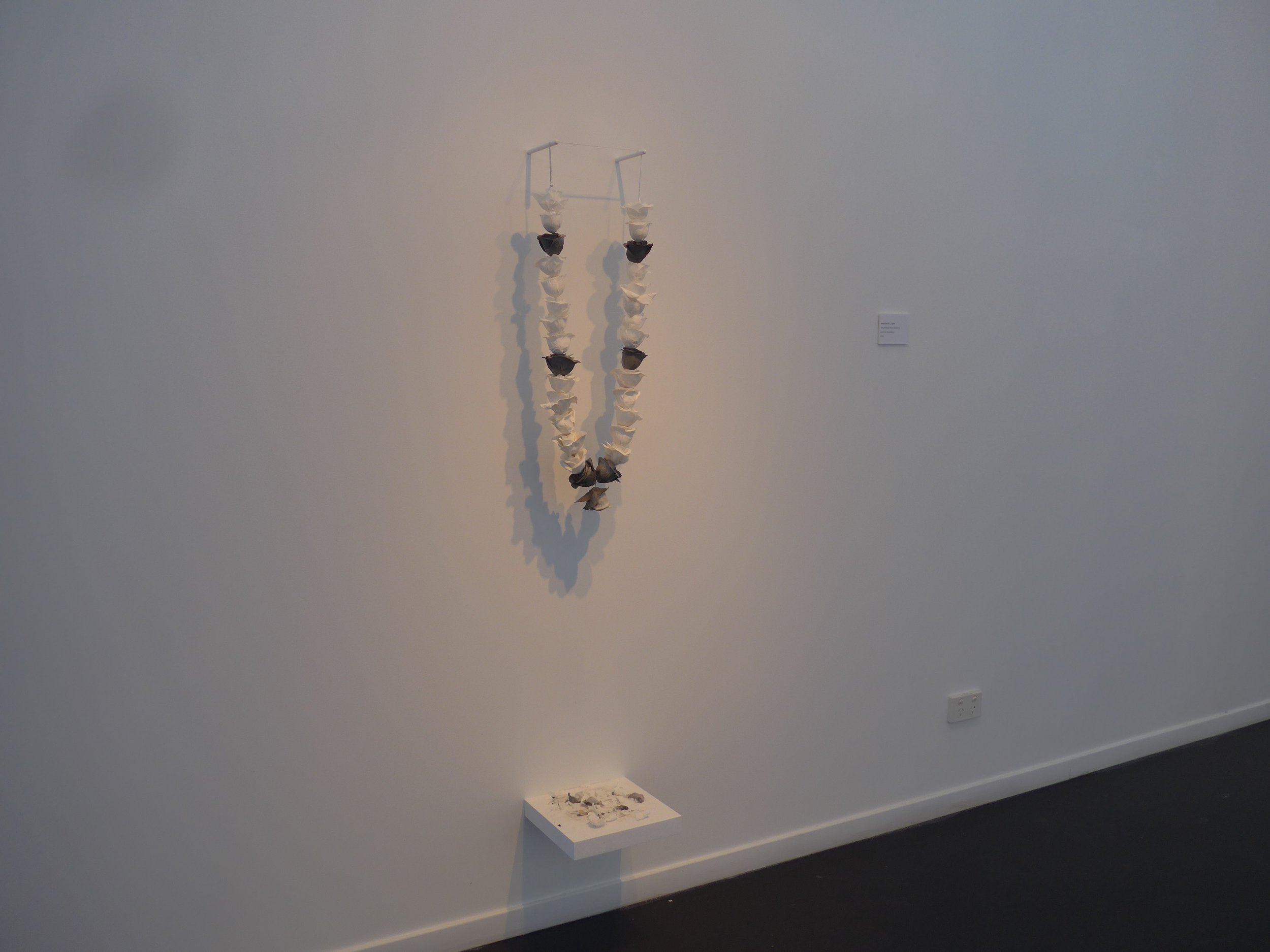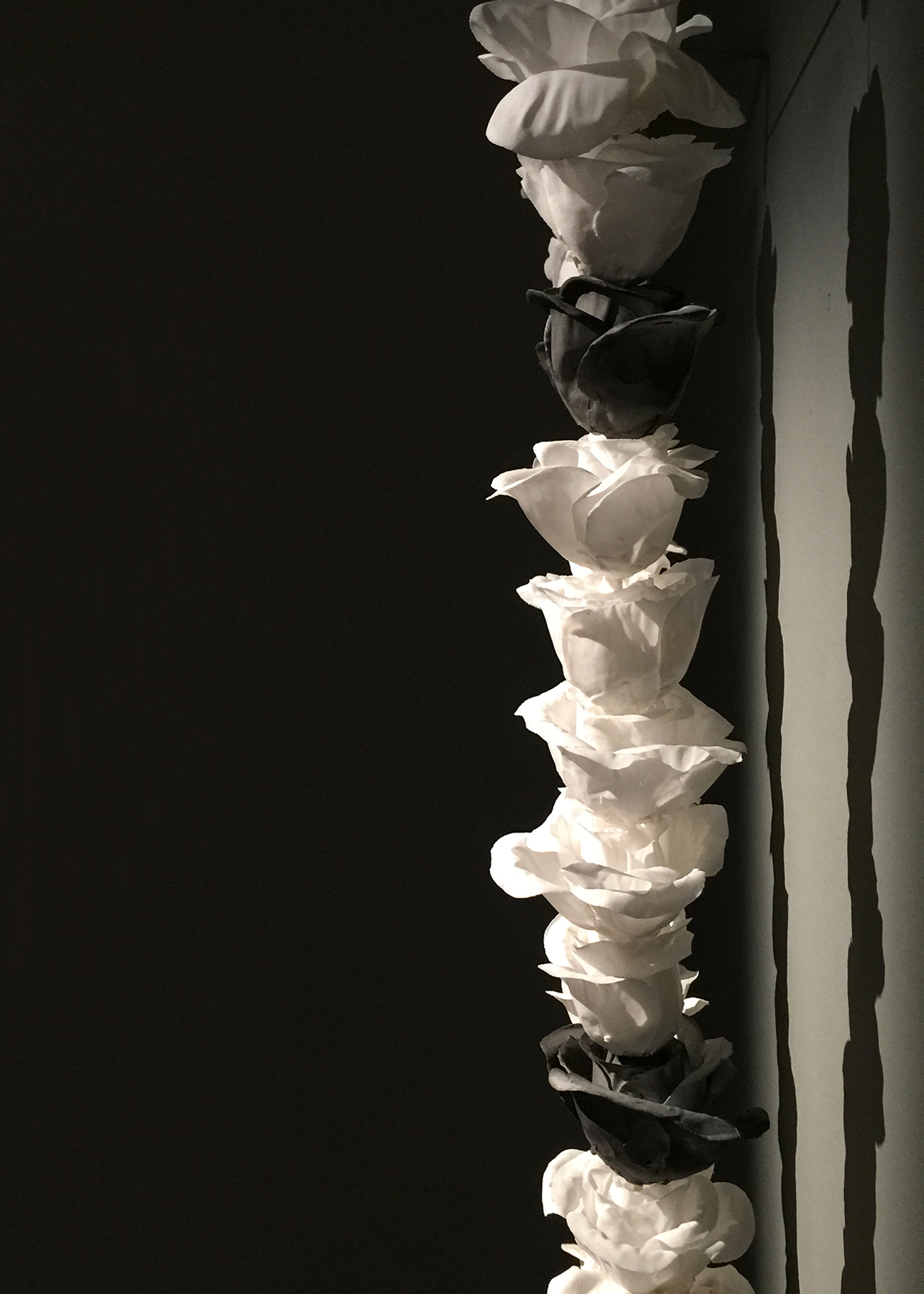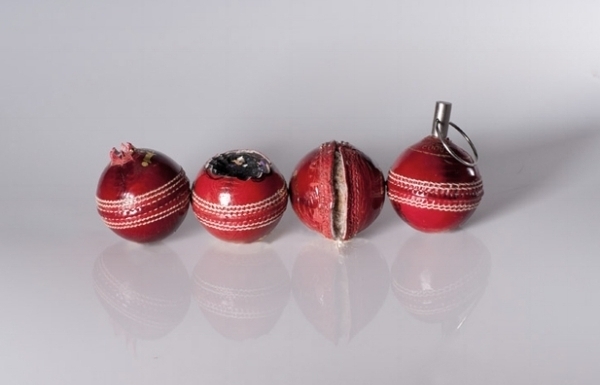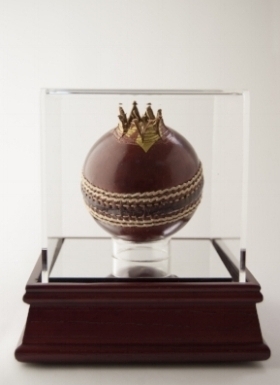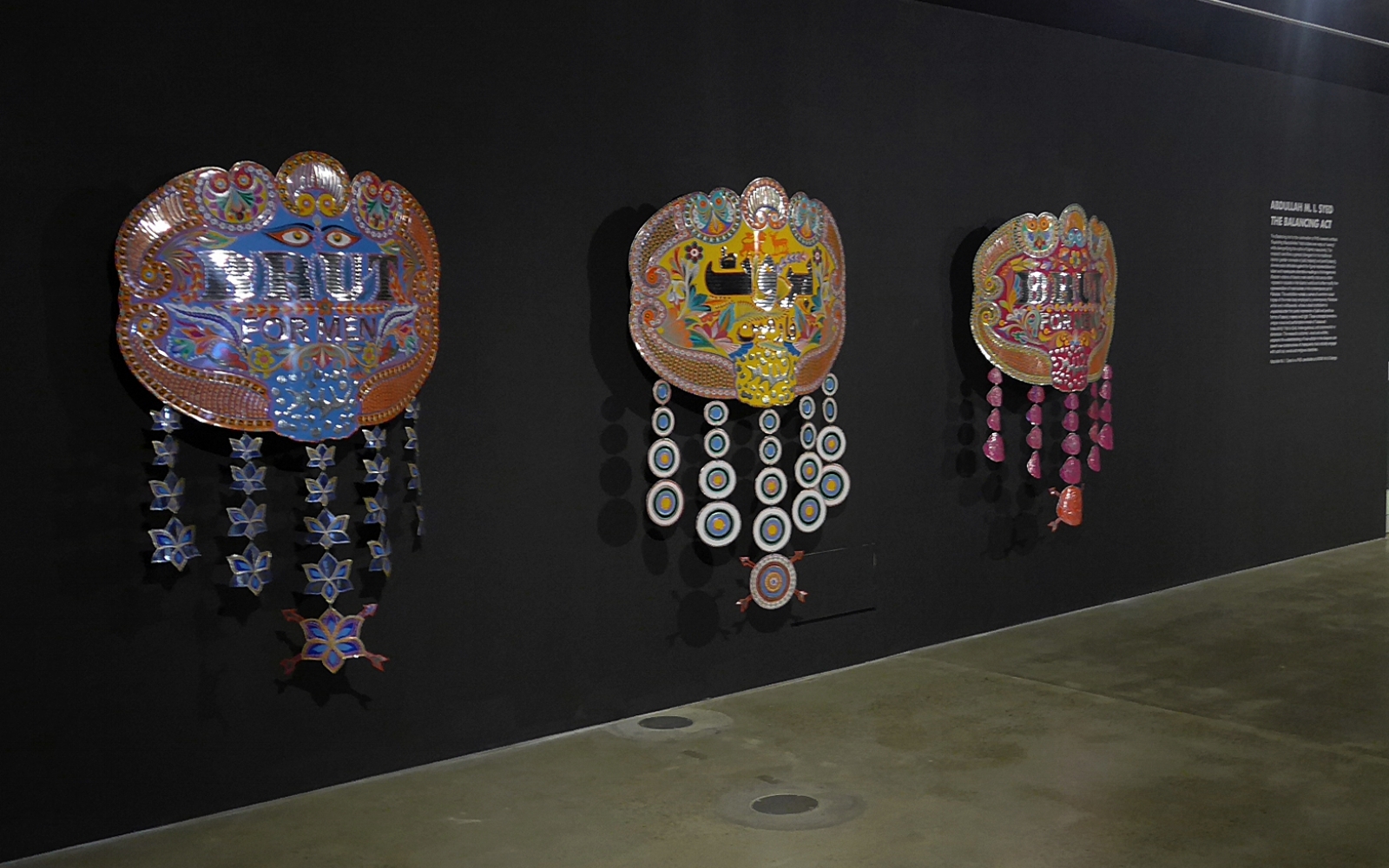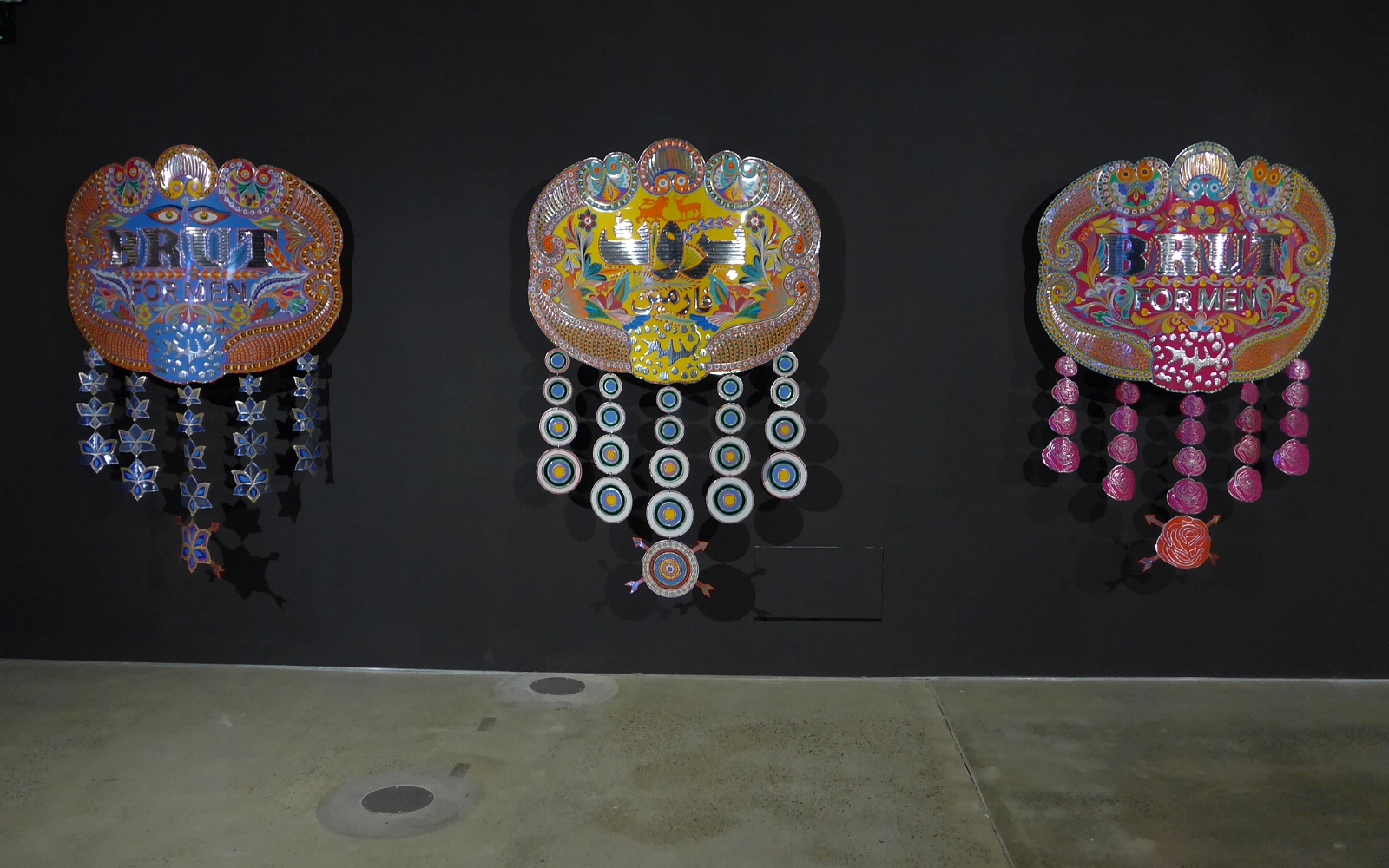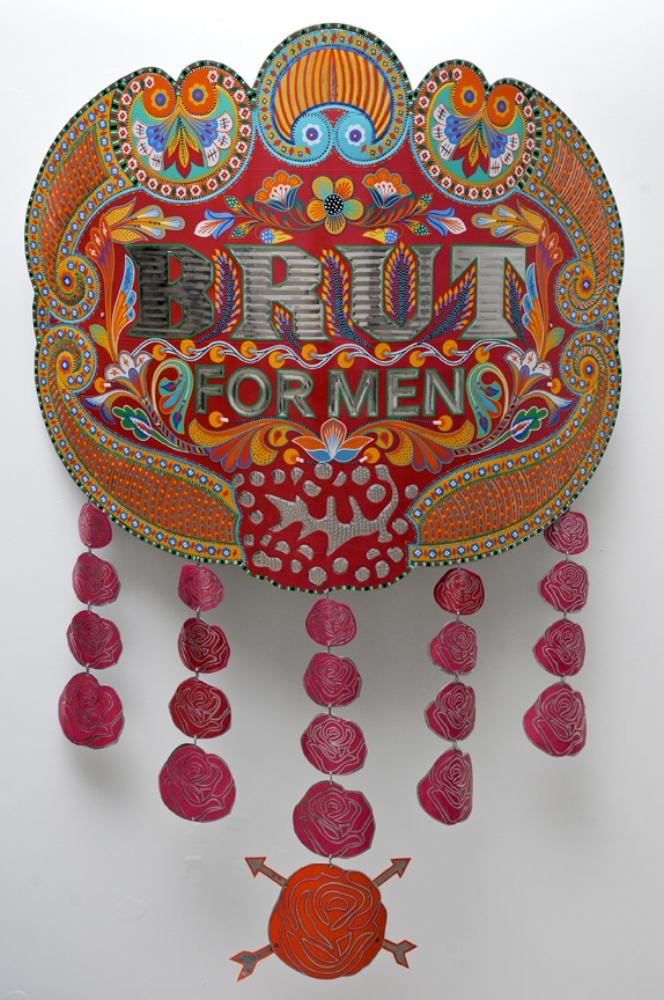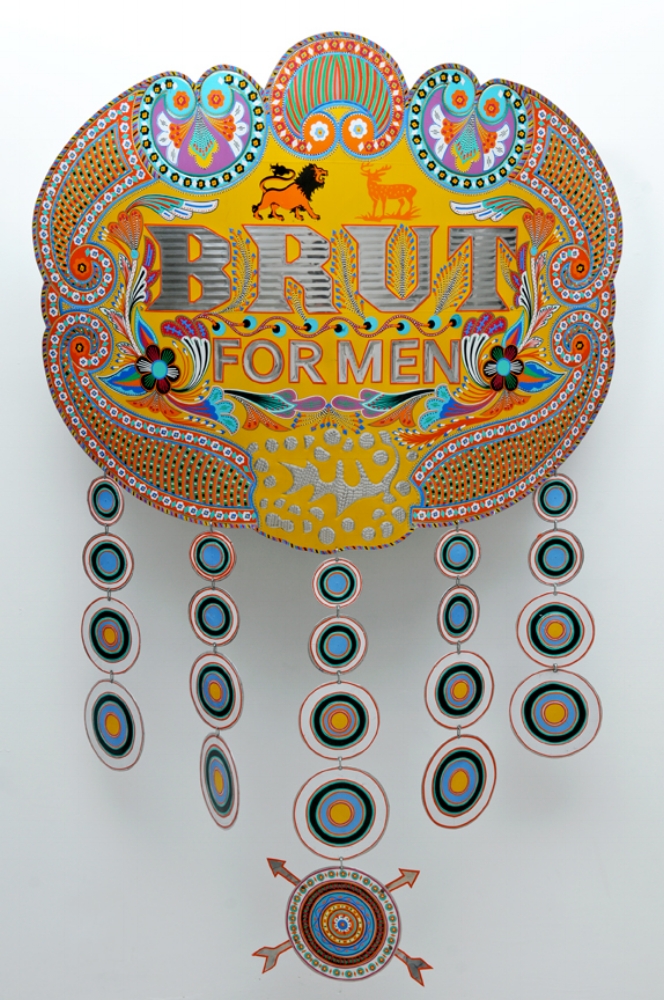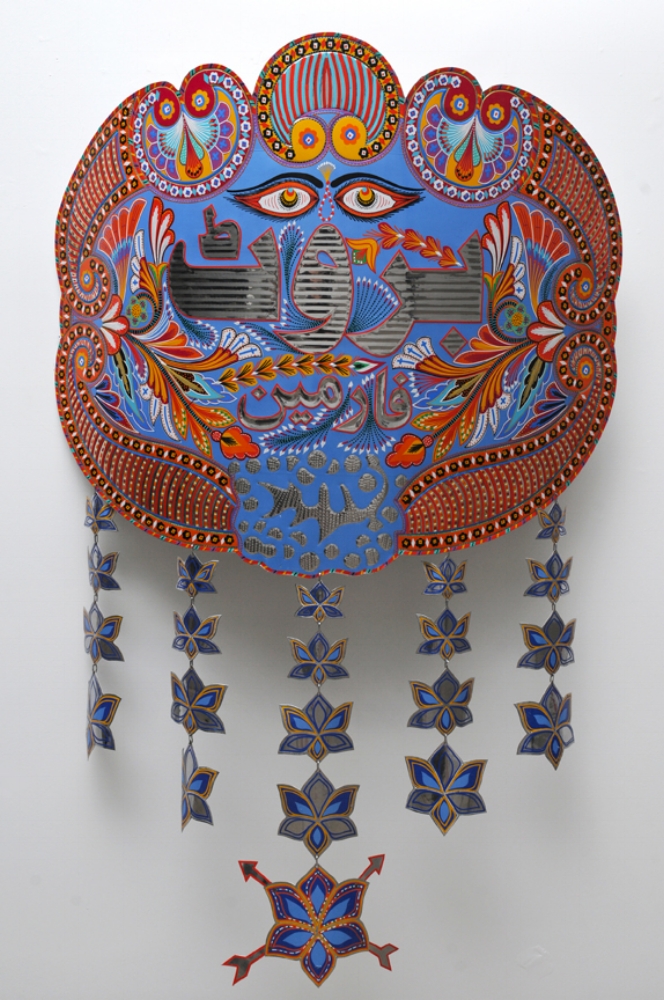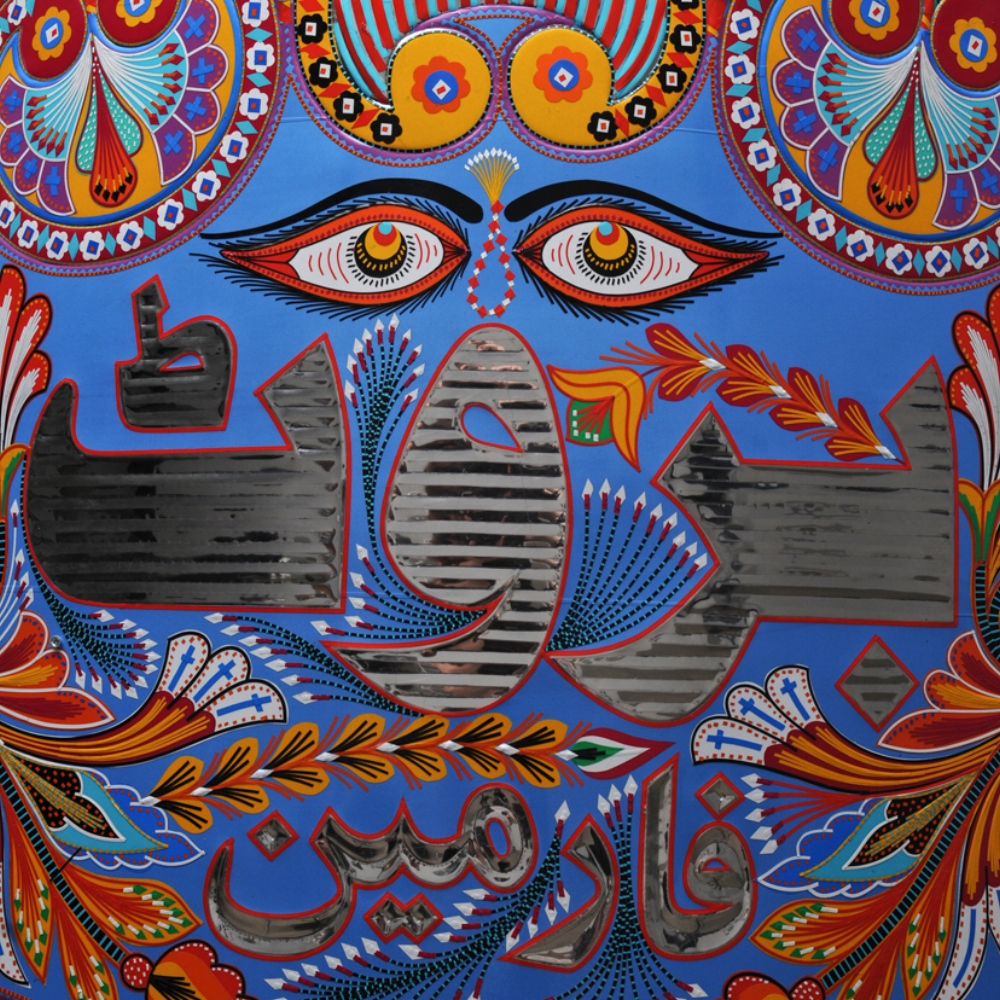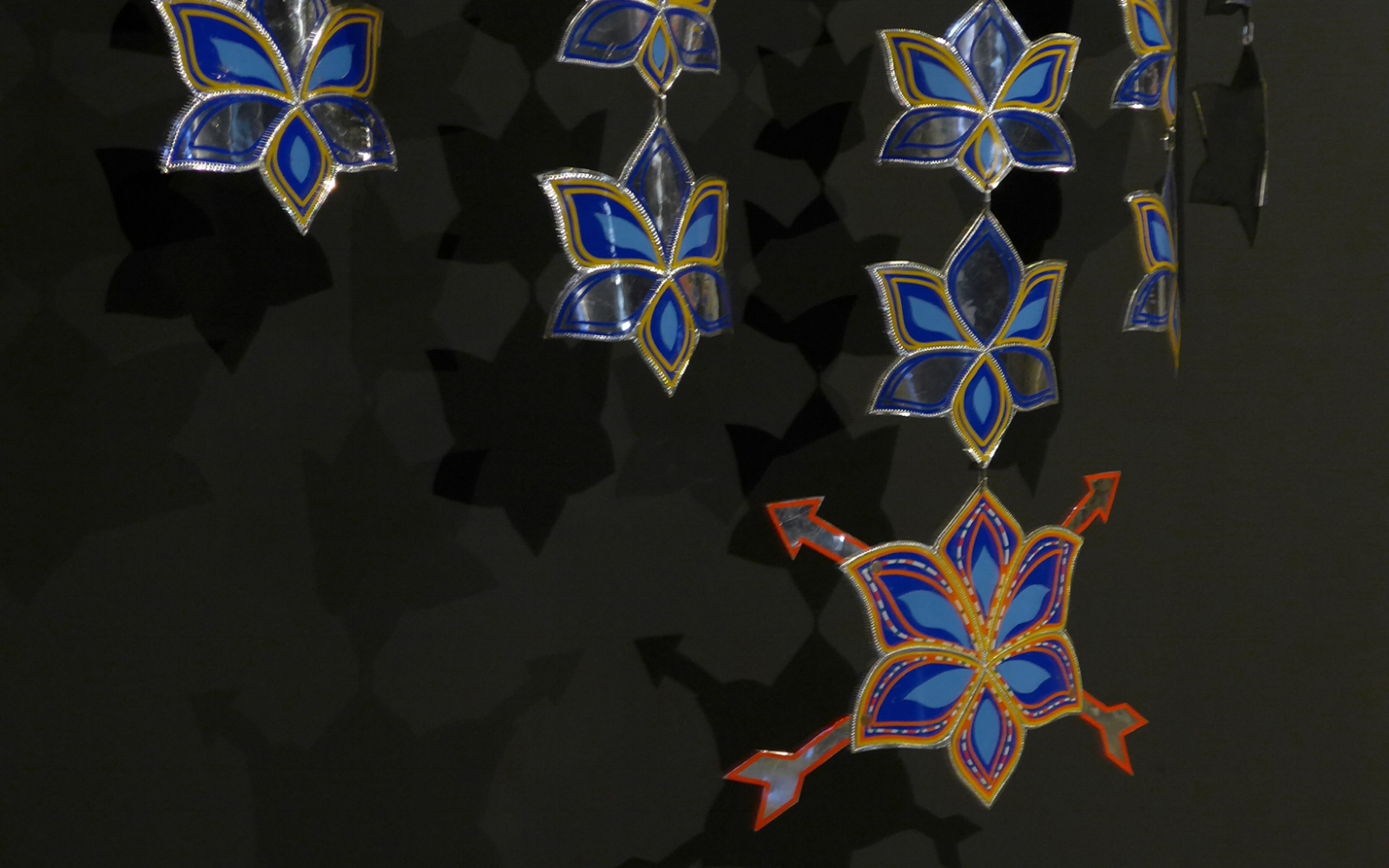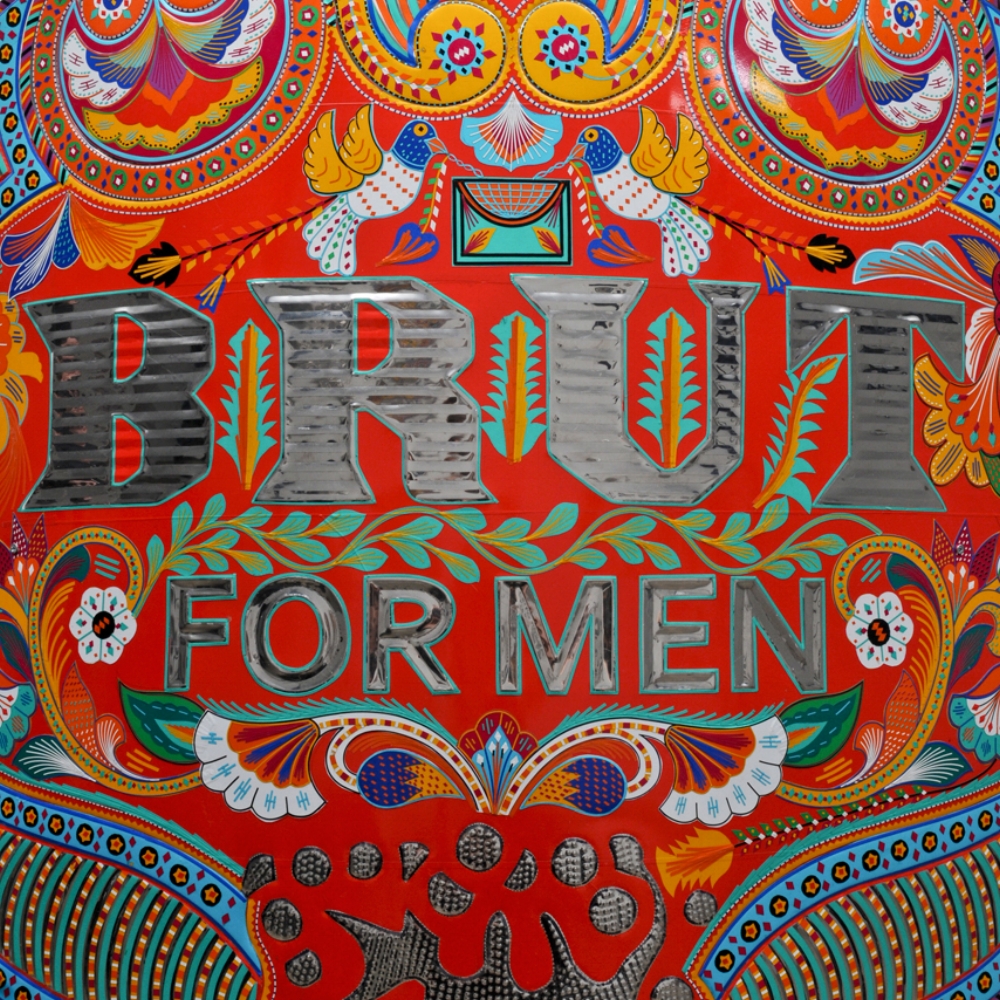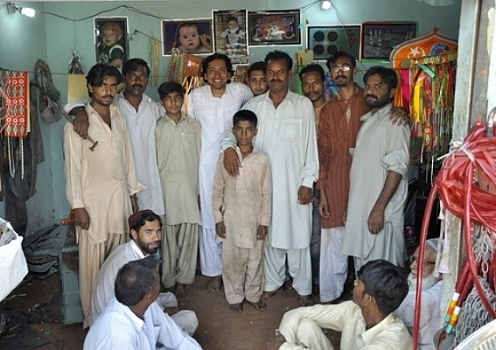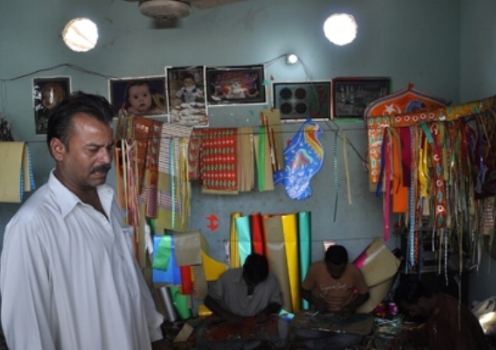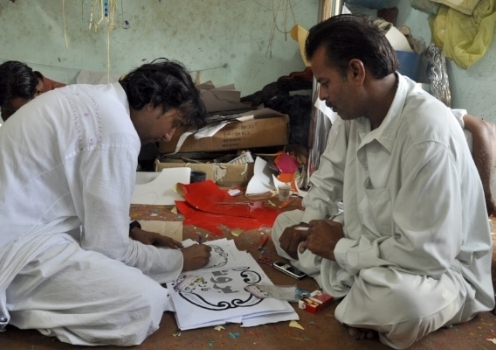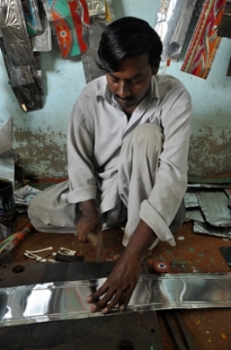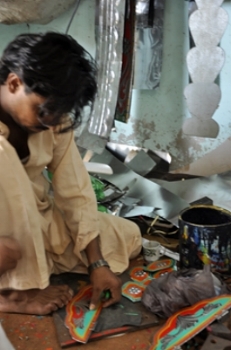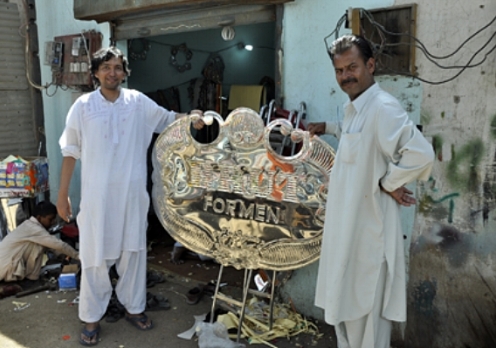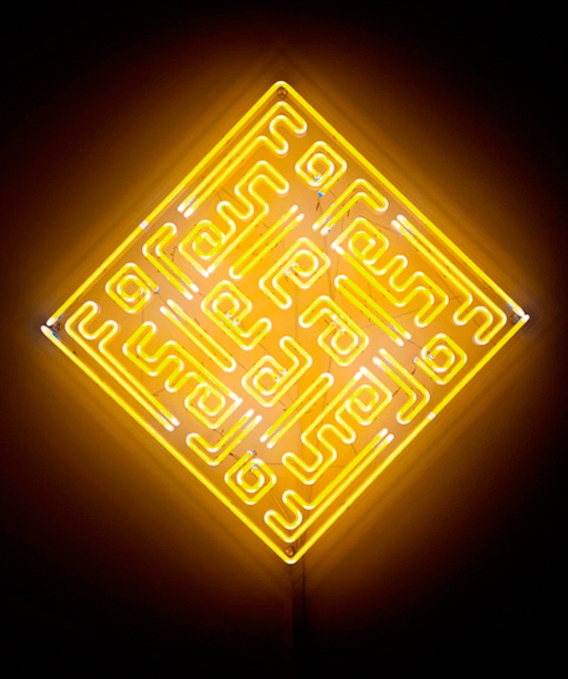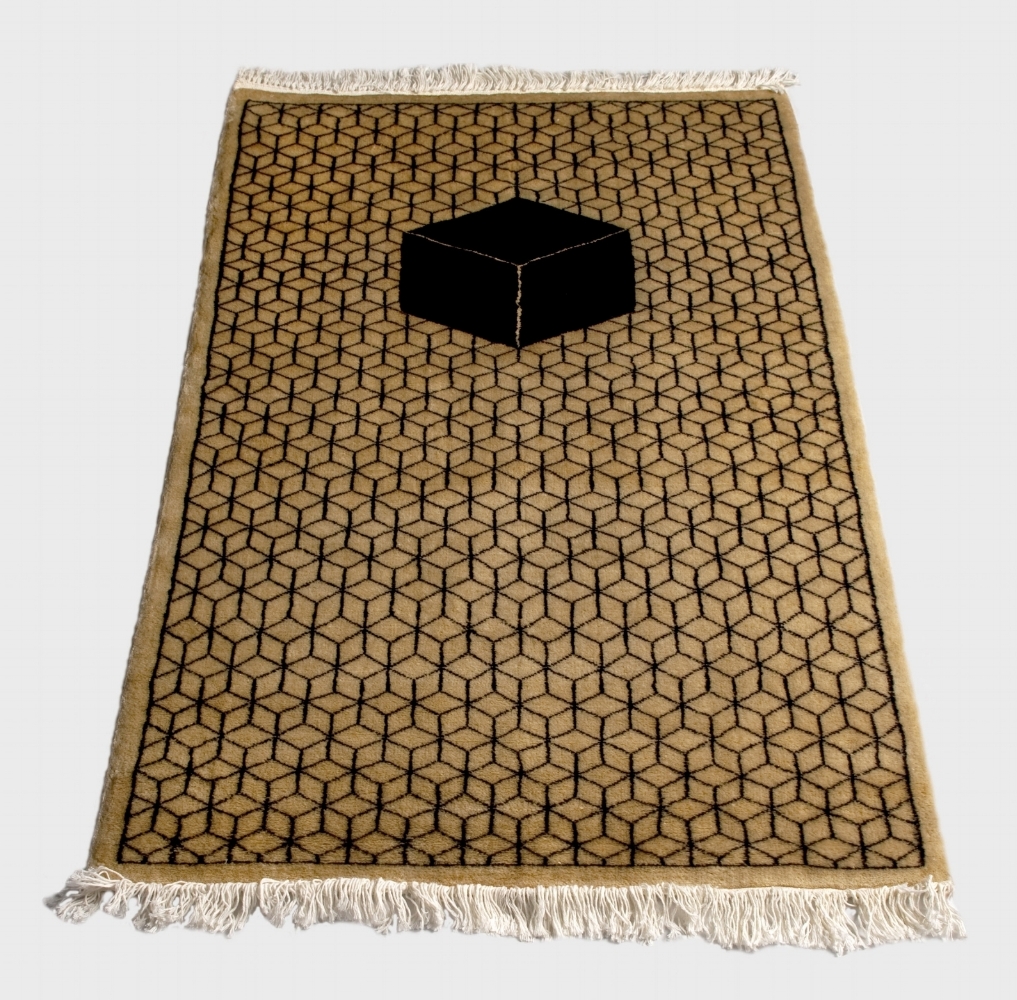Forbidden Fruit (2007-2018), Hand carved and altered leather Cricket balls, rubber, wood, metal, 24k gold leaf and wire, tape and banknotes in multiple parts, 14cm x 10cm x 10cm (smallest ball), image courtesy the artist, photography by Mahmood Ali and the artist.
Forbidden Fruit (2007 -) series considers the engagement between object, meaning and history through minimal intervention. Since 2007, I have re-appropriated the Cricket ball using incisive surgical cuts, carvings, peelings, and gilding, resulting in forms such as a pomegranate, a half-eaten apple and a hand grenade. The process of this transformation highlights my personal concerns of displacement and coming to grips with shifting universal ethics, morals, and political activism; while the idea of fake and truth becomes an all-consuming idiom of our times. The balls thus morph into objects that depict universal ideas of consumption, power and identity politics imbued with the rise and fall of social, political and sporting icons. Historically, cricket is said to have originated in South Asia as a simple bat and ball game that the British assimilated, assigning rules and making it the ‘sport of the empire’: : an elite pastime for men who wore it as a status crown of high art, enlisted with the power to measure the progress of colonized cultures. However, what once was a triumph of colonized culture and a ‘gentleman’s game’ of fair play has devolved into a morass of controversy, scandal, even terrorism; beset by inequalities of class, race, sex and money.
Keeping this in view, the re-configured ‘tempered’ red and white Cricket balls signify the forbidden fruit, with its associations of pleasure, deceit, humiliation, betrayal, shame and guilt. Each ball insinuates the ethical deterioration of the sport referencing particulate scandal and controversy in the history of Cricket. However, I have watched with dismay while the sport of Cricket, once known as the unifier of audiences across continents, has joined the global dilemma of ‘fixing’ and manipulation, mirroring present vagaries of international politics. Despite such display of immoral power politics, Forbidden Fruit infers my persistence to remain a happy, hopeful spectator always calling for the best team to win.
